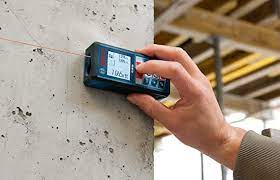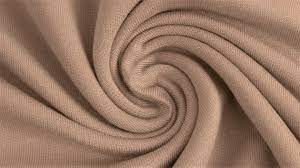When it comes to insulating your home, the options seem endless. From traditional fiberglass insulation to innovative denim insulation, homeowners have many choices.
While many are familiar with the properties and installation process of fiberglass insulation, denim insulation remains somewhat of a mystery.
This article will delve into denim insulation, uncovering its unique properties and how it compares to its more conventional counterpart: fiberglass insulation.
By understanding how denim insulation works and its potential advantages over fiberglass, homeowners can make informed decisions about their home’s energy efficiency and environmental impact.
Table of contents
- What is Denim Insulation
- How Denim Insulation Works
- What are the benefits of Denim Insulation?
- What are the Cons of Denim Insulation?
- What is Fiberglass Insulation
- What are the Pros of Fiberglass insulation?
- What are the Cons of Fiberglass insulation?
- Denim Insulation vs. Fiberglass Insulation
- FAQs
- Conclusion
- References
- Recommendations
What is Denim Insulation
Denim insulation is an environmentally beneficial substitute for conventional insulating materials like fibreglass or foam.
It is created from recycled denim, mostly from used jeans, which is first broken down into fibres, treated to make it fire resistant, and then shaped into rolls or batts for building insulation.
Usually, boric acid or other fire-retardant substances are applied to denim fibers to improve their ability to withstand flames.
Because leftover garment material that may otherwise wind up in landfills is repurposed, this insulation is known for being environmentally beneficial.
Read Also: What is Latex Paint? | What Makes it Outstanding
How Denim Insulation Works
Denim insulation works by trapping air pockets between the fibers of the shredded denim. These air pockets act as an insulator, preventing heat from transferring from one side of the insulation to the other.
The high R-value of denim insulation is due to its density and the air pockets trapped between the fibers. The denser the denim insulation, the higher its R-value.
Here’s how it typically functions:
1. Material Composition: Denim insulation is made from shredded and treated recycled denim or cotton fibers. These fibers are processed to create batts or rolls, similar to traditional fiberglass insulation.
2. Thermal Insulation: The insulation traps air within its fibers, creating pockets that slow heat transfer. This helps to regulate indoor temperatures by reducing heat flow through walls, ceilings, and floors.
3. Installation: It’s installed in much the same way as other types of insulation, either as batts or loose-fill material. It’s placed between wall studs, attic spaces, or floor joists to create a thermal barrier.
4. Sound Absorption: Unlike thermal insulation, denim insulation absorbs sound effectively. Its dense structure helps reduce noise transmission between rooms, contributing to improved acoustic comfort within a building.
5. Moisture Handling: While not entirely impervious to moisture, denim insulation can handle water relatively well compared to other materials. It retains its insulating properties even when exposed to damp conditions, making it suitable for moisture-prone areas.
6. Eco-Friendly: One of its key appeals is its eco-friendliness. By recycling denim and cotton fibers, it reduces waste and lessens the environmental impact associated with traditional insulation materials.
Denim insulation offers a sustainable and effective alternative to traditional insulation materials while providing thermal and sound insulation benefits for buildings and homes.
What are the benefits of Denim Insulation?
Denim insulation has several advantages.
1. Ecologically Sustainable:
Because it is constructed of recycled denim, fewer new raw materials are used, and old jeans are kept out of landfills. This lessens the impact of insulation manufacturing on the environment and encourages sustainability.
2. Safe and Non-Toxic
Unlike alternative insulating materials that could release hazardous chemicals or fibres, denim insulation is typically considered safe and non-toxic. During installation, it usually doesn’t cause breathing problems or skin discomfort.
3. Sincerely Insulated
It offers effective thermal insulation, assisting in the control of interior temperatures and enhancing building energy efficiency. It lessens the need for heating and cooling systems by keeping areas warmer in the winter and colder in the summer.
4. Audio Transmission
Because of its superior sound-absorbing qualities, denim insulation helps to minimize noise transmission inside buildings. Reducing outside noise and enhancing interior room acoustics can increase comfort.
5. Simple Assembly
Handling and installing it is not too difficult because it comes in various shapes and sizes. Denim insulation may be cut to fit specific spaces, whether it is in rolls or batts, making it easier to install in walls, ceilings, or floors.
6. Resistance to Fire
Denim insulation adds a layer of safety to structures by providing a certain degree of fire resistance, usually through treatment with ingredients like boric acid.
7. Control of Moisture
By controlling the amount of moisture in walls, denim insulation can lessen the chance of mold growth and potential damage from excessive moisture.
Read Also: What Is Home Compost? How to Start Composting at Home
What are the Cons of Denim Insulation?
Despite its many advantages, denim insulation has some drawbacks that homeowners should be aware of before deciding whether or not to use it in their homes. Here are some of the cons of denim insulation:
- Higher cost: Denim insulation is generally more expensive than traditional insulation materials like fiberglass and cellulose. This is due to the cost of sourcing and processing recycled denim jeans.
- Limited availability: Denim insulation is less widely available than traditional insulation materials. This can make it more difficult to find and purchase, and it may also limit the options for DIY installation.
- Lower fire resistance: Denim insulation is less fire resistant than other insulation types, such as spray foam. The denim fibers can burn if exposed to high heat or flames.
- Higher moisture absorption: Denim insulation is more likely to absorb moisture than traditional insulation materials. This can make it less effective in areas with an increased risk of moisture problems.
- Potential for mold growth: Denim insulation that has absorbed moisture can be more prone to mold growth. This can be a health hazard and can also damage the insulation itself.
- Complications with installation: The installation of denim insulation can be more complex than the installation of traditional insulation materials. This is because the denim fibers can be difficult to work with and more prone to tearing.
Overall, denim insulation is a sustainable and eco-friendly material that can be a good choice for homeowners looking for an alternative to traditional insulation materials.
Read Also: How to Get Rust Off Stainless Steel
What is Fiberglass Insulation
One kind of insulation composed of fine glass fibers is called fiberglass insulation. It is frequently used in houses, businesses, and structures to lessen heat transfer.
The fibers help keep places warmer in the winter and colder in the summer by trapping pockets of air and limiting heat transfer.
To increase energy efficiency and maintain pleasant interior temperatures, fiberglass insulation is frequently put on walls, ceilings, attics, and floors. It is available in rolls, batts, and loose-fill forms.
What are the Pros of Fiberglass insulation?
Fiberglass insulation is popular for homeowners and builders due to its many advantages. Here are some of the pros of fiberglass insulation:
- Cost-effectiveness: Fiberglass insulation is relatively inexpensive compared to other types of insulation, such as cellulose and spray foam. This makes it a budget-friendly option for homeowners looking to improve their energy efficiency.
- High-performance: Fiberglass insulation has a high R-value, which is very effective at resisting heat flow. This can help reduce energy bills and keep your home comfortable year-round.
- Versatility: Fiberglass insulation can be used in various applications, including walls, attics, crawl spaces, and floors. This makes it a versatile option for homeowners insulating different parts of their homes.
- Durability: Fiberglass insulation can last many years with proper care. This makes it a long-term investment for homeowners.
- Fire-resistance: Fiberglass insulation is treated with fire-retardant chemicals, which makes it safe to use in homes and businesses. This is important for homeowners concerned about their homes’ safety.
- Soundproofing: Fiberglass insulation can help to reduce noise pollution. This makes it a good choice for homeowners in noisy neighbourhoods or with thin walls.
- Ease of installation: Fiberglass insulation is relatively easy to install, even for homeowners not experienced with home improvement projects. This makes it a DIY-friendly option.
- Availability: Fiberglass insulation is widely available at home improvement stores and lumberyards. This makes it easy for homeowners to find and purchase the insulation they need.
- Environmentally friendly: Fiberglass insulation is made from recycled glass, making it a more environmentally friendly option than other types of insulation.
- Safe for pets and children: Fiberglass insulation is generally considered safe for pets and children as long as it is not inhaled.
What are the Cons of Fiberglass insulation?
Despite its many advantages, fiberglass insulation also has some drawbacks. Here are some of the cons of fiberglass insulation:
- Irritation: Fiberglass insulation can irritate the skin, eyes, and respiratory system. The fibers can get into the air and be inhaled or absorbed through the skin.
- Messy: Fiberglass insulation can be messy to install, as the fibers can quickly be released into the air. This can make it difficult to clean up and pose a respiratory problem risk.
- Not suitable for all applications: Fiberglass insulation is not suitable for all applications. For example, it should not be used in areas where it will be exposed to moisture, such as bathrooms and kitchens.
- Not as effective as other types of insulation: Fiberglass insulation is not as effective as different types of insulation, such as spray foam, at resisting moisture. This can make it less effective in areas with a high risk of moisture problems.
- Can attract pests: Fiberglass insulation can attract pests, such as mice and rats. This is because the fibers can provide nesting material for these pests.
- Not ideal for airtight construction: Fiberglass insulation is not ideal for airtight construction, as it can allow air to pass through it. This can reduce the energy efficiency of the insulation.
Overall, fiberglass insulation is a versatile and cost-effective material that can be a good choice for many homeowners. However, it is essential to be aware of the potential drawbacks of fiberglass insulation before installing it in your home.
Read Also: What Is PU Leather, and Is It the Real Deal?
Denim Insulation vs. Fiberglass Insulation
The Denim insulation and fiberglass insulation are two different types of insulation materials, each with its characteristics and advantages:
Denim Insulation:
1. Material: Made from recycled denim or cotton fibers, it’s an eco-friendly option that repurposes old jeans and other cotton-based materials.
2. Safety: Generally considered safe and non-toxic, posing fewer health risks during installation than fiberglass insulation.
3. Sound Absorption: Provides good sound insulation and can help reduce noise transmission between rooms.
4. Moisture Handling: Handles moisture relatively well and can still maintain its insulation properties when damp.
5. Softness and Handling: Softer and easier to handle than fiberglass insulation, reducing the risk of skin irritation during installation.
Fiberglass Insulation
1. Material: Composed of fine glass fibers, it’s widely used and easily available in rolls, batts, or loose-fill forms.
2. Cost: Generally more affordable than other insulation materials, including denim insulation.
3. Fire Resistance: Fiberglass is inherently fire-resistant and can provide additional fire protection.
4. Thermal Performance: Offers good thermal insulation, helping to regulate indoor temperatures effectively.
5. Durability: Fiberglass insulation tends to be durable and maintains its effectiveness over time without settling or degrading.
Choosing between denim and fiberglass insulation often depends on personal preferences, specific insulation needs, budget considerations, and health or environmental concerns.
Denim insulation appeals to those who prioritize eco-friendliness and safety during installation, while fiberglass insulation remains popular for its cost-effectiveness, fire resistance, and durability.
Read Also: Top 30 inspirational commercials that sold out their products
FAQs
Denim insulation works by trapping air pockets between its fibers. These air pockets reduce heat transfer, making the home more energy-efficient. Denim insulation also helps to block sound, making the home quieter.
Denim insulation offers several benefits, including:
Reduced energy costs: Denim insulation helps keep homes more relaxed in the summer and warmer in the winter, saving money on energy bills.
Improved indoor air quality: Denim insulation helps trap allergens and dust mites, improving indoor air quality.
Reduced noise pollution: Denim insulation helps block sound, creating a more peaceful home environment.
Environmentally friendly: Denim insulation is made from recycled materials, making it more environmentally friendly than fiberglass insulation.
Safe to handle: Denim insulation is generally considered less irritating than fiberglass insulation, making it safer to drive.
Easy to install: Denim insulation is relatively easy, even for homeowners not experienced with DIY projects.
Denim insulation is made from recycled cotton fibers, primarily from old denim clothing.
No, denim insulation is unsuitable for wet environments as it can lose its insulating properties when exposed to moisture.
Denim insulation is treated with fire-retardant chemicals, making it resistant to flames and high temperatures.
Denim insulation offers thermal and soundproofing properties similar to fiberglass, but with eco-friendly and non-toxic benefits.
Conclusion
The comparison between denim insulation and fiberglass insulation reveals the potential for denim as a viable alternative in the construction industry. Denim insulation offers several advantages over traditional fiberglass insulation, including its eco-friendly composition, effective thermal resistance, and ease of installation.
The unique properties of recycled denim make it an attractive option for environmentally-conscious builders and homeowners seeking sustainable building materials. As more research and development continue to improve the performance and cost-effectiveness of denim insulation, it is evident that this innovative product has the potential to revolutionize the insulation market.





